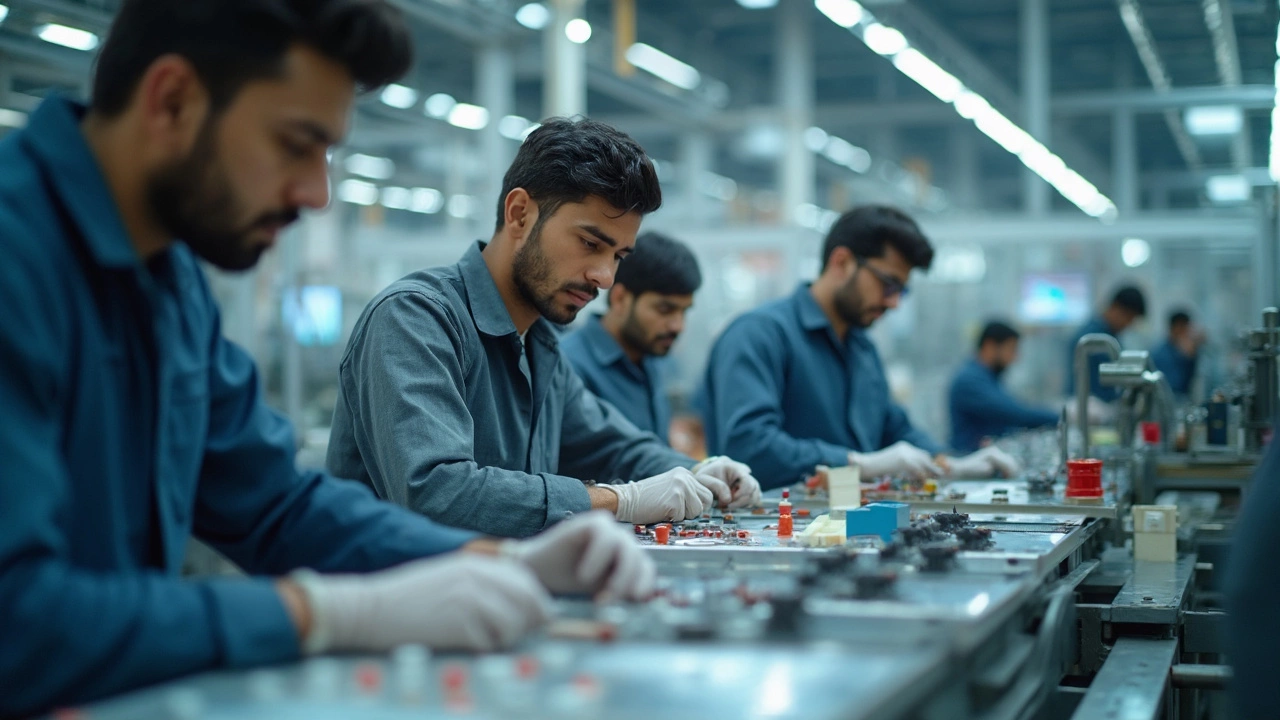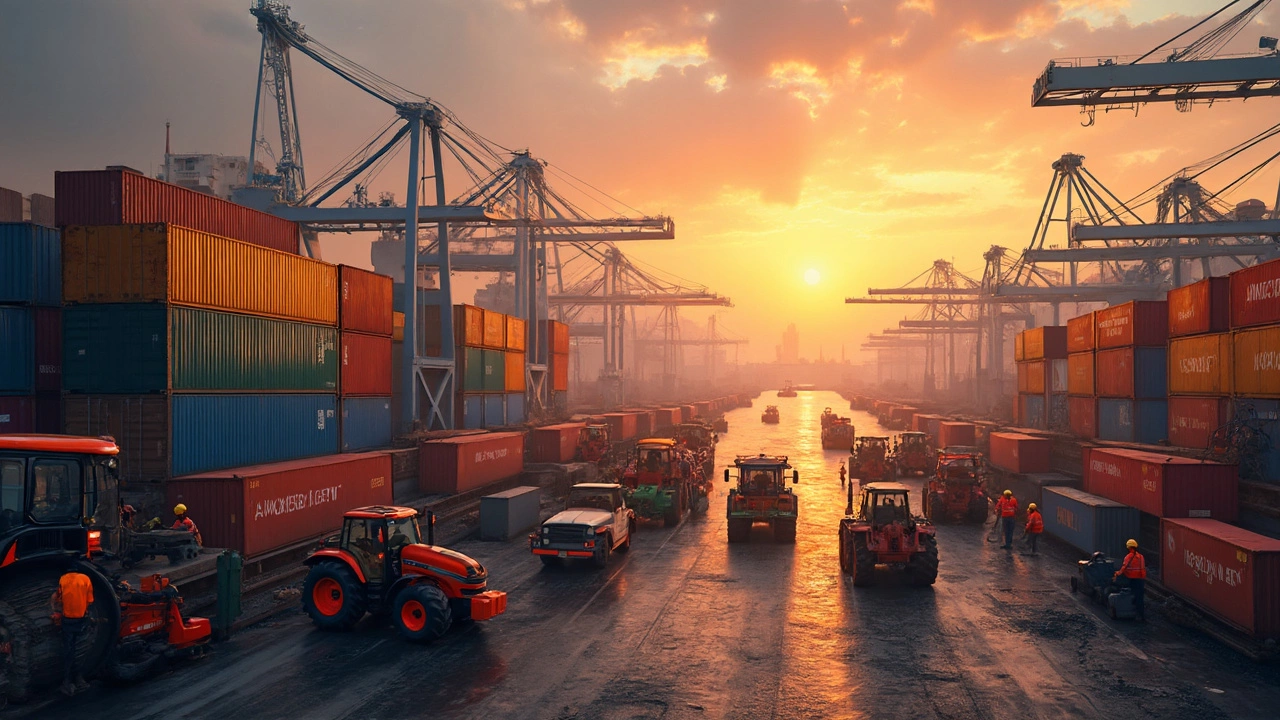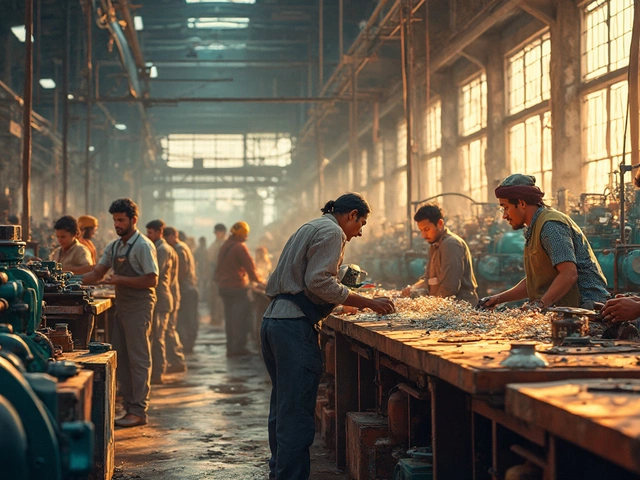Ever wondered what kinds of giant machines roll out of Indian factories and straight onto ships bound for other countries? There’s a surprising variety—think more than just tractors and cranes. Today, India is a global force in machinery manufacturing, pumping out everything from cutting-edge textile machines to robotics and packaging lines.
What’s cool is the way Indian companies have moved up from just making cheap parts to building complex, high-quality machines. This shift didn’t happen overnight. Over the past few years, Indian exporters have focused on reliability, meeting tough global standards, and non-stop innovation—so much that even brands in Germany or Japan are eyeing “Made in India” with respect, not just caution.
If you’re a business looking for machines that don’t quit or a buyer trying to understand what makes Indian machinery tick, knowing what India actually exports sets you ahead. You’ll also find out how these trends affect pricing, quality, and the kind of support you get after purchase. Let’s break it down into what’s actually being sent overseas right now and why global buyers are hooked. No boring lists, just real-world info you can use.
- Biggest Machinery Export Categories
- Top Export Destinations
- Why Indian Machinery Is In Demand
- Tips for Global Buyers and Indian Sellers
Biggest Machinery Export Categories
Okay, let’s get real about what kind of machinery export types are actually leaving India’s docks. It’s not just one or two categories—there’s a big mix. But, a few types do stand out because they bring in the most money and see the highest demand.
- Automobile and Auto Parts: Think engines, gearboxes, axles, chassis parts—these make up a chunk of India’s machinery shipments, especially heading to Europe, Africa, and Southeast Asia.
- Industrial Machines: This is a big one. India exports stuff like food processing equipment, plastic molding machines, CNC machines, and all sorts of pumps, compressors, and material handling equipment. These are the backbone of factories worldwide.
- Farm and Agricultural Machinery: Tractors, harvesters, rice planters, and irrigation pumps are consistently popular. Indian farm machines are known for being rugged and affordable. You’ll spot them everywhere from Africa to Latin America.
- Electrical Machinery and Components: This includes everything from transformers to industrial motors and even generators—super important for infrastructure projects across the globe.
- Textile Machinery: Honestly, this one shines. Given how huge the Indian textile scene is, it’s no surprise that weaving machines, spinning machinery, looms, and garment manufacturing units are key engineering goods shipped out.
Here’s a quick snapshot from the Ministry of Commerce 2023 report—the top five machine categories by value that India exported:
| Category | Export Value (USD Billion) |
|---|---|
| Auto Components & Machinery | 8.1 |
| Industrial Machinery | 7.5 |
| Electrical Machinery | 5.6 |
| Textile Machinery | 3.8 |
| Farm Equipment | 3.1 |
One neat fact? India’s pumps and compressors are especially in demand in the Middle East, where they’re used in everything from oil rigs to water supply projects. On the other hand, Indian textile machines often find a home in Bangladesh, Vietnam, and Turkey, thanks to their lower costs and sturdy build.
Bottom line: the variety is wide, but these five sectors are the heavyweights in the Indian exporters playbook. If you’re in the market to buy or sell, these categories are always buzzing.
Top Export Destinations
When it comes to machinery export from India, there’s a neat map of regular buyers across the globe. The United States still tops the chart—American companies snap up everything from Indian auto parts to large industrial pumps. If you’ve never thought about American factories relying on Indian-made conveyor belts or food processing machines, you should. These deals run into billions every year.
Germany and the UK are next on the list, with European buyers particularly interested in smart farming machinery, textile equipment, and heavy electrical gear. Europe’s focus on quality explains why only Indian manufacturers with the best certifications get to play here. If you’re thinking of exporting to the EU, ticking all the compliance checkboxes is a must.
The Middle East tells a different story. The UAE and Saudi Arabia are hungry for construction machinery, pumps, and turbines. Oil-rich countries spend big on infrastructure—big contracts usually go to Indian suppliers who can deliver fast and support their stuff long after the sale.
Closer home, Bangladesh and Nepal are steady customers for packaging machinery and agricultural tools. Indian exporters like these routes because transport is quick and after-sales visits are manageable. Plus, Indian machines can be tweaked easily for local needs, which earns even more trust.
Here’s a quick snapshot so you can size up the market yourself:
| Country | Main Machinery Imported from India | 2024 Export Value (USD Billion) |
|---|---|---|
| United States | Auto parts, food processing, pumps, electrical machinery | 3.2 |
| Germany | Textile, agricultural, industrial equipment | 1.4 |
| UAE | Construction, turbines, mining equipment | 1.0 |
| Bangladesh | Packaging, textile, agricultural tools | 0.7 |
Notice that most Indian exporters keep a sharp eye on both regulations and market trends in these countries. If you're planning to break into new destinations, research local standards and make sure your pricing lines up with what buyers are used to. That way, you’re not just sending machinery—you’re building long-term business.

Why Indian Machinery Is In Demand
The world doesn’t buy from India just because prices are low. There’s more to the story. Indian machinery exporters have figured out how to deliver a mix of affordability, reliability, and after-sales support. That combo keeps international clients coming back for more.
One big reason buyers line up for Indian-made industrial machines: these machines are tough. Indian factories test their equipment to work in everything from dusty African villages to high-tech Middle Eastern plants. And brands here take feedback seriously—shipping out upgrades or replacement parts faster than you’d expect.
It’s not just about industrial strength, though. India has become a prime spot for custom engineering. Exporters are quick to tweak their designs to fit what the buyers want—whether it’s making packaging lines fit smaller factory floors in Vietnam or adding smart sensors for European safety rules. That ability to be flexible (while still watching costs) gives India a definite edge.
If you dig into the numbers, the growth curve is legit. India’s engineering goods exports, including machinery, hit over $112 billion in 2024. Categories like auto parts, electric machinery, and construction equipment saw the biggest jumps.
| Machinery Category | Top Buyer Country (2024) | Key Benefit |
|---|---|---|
| Construction Equipment | USA | Durability, price |
| Power Transmission Gear | Germany | Custom designs |
| Textile Machinery | Bangladesh | Energy efficiency |
| Packaging Machines | UAE | Easy upgrades |
It also helps that the Indian government stepped up with policy changes and export incentives in recent years. This means faster export clearances and more trust in ‘Made in India’ labels. A lot of global buyers now ask directly for Indian brands—especially if they want consistent quality without crazy markups.
And don’t underestimate the power of language. Indian suppliers almost always stick to clear English communication and decent tech support—something European and American buyers see as a rare plus.
Tips for Global Buyers and Indian Sellers
If you’re thinking about getting machinery from India or you want to export your products out, there are a few things you should actually care about—beyond just price tags. Indian machinery manufacturers today compete with the big guys, but there are still practical steps to make sure your business runs smooth.
Let’s break it down:
- Check Certifications: Always look for ISO or CE marks when you’re buying. These stamps aren’t just for show; they prove machines match international standards. Without these, clearing customs or getting local approvals in Europe or North America gets hairy fast.
- Don’t Skip the Factory Visit: If you can, visit the factory. I know it sounds old-school, but nothing beats seeing the tech, meeting the engineers, and double-checking your specs in person. Many buyers get better deals or custom tweaks this way.
- Ask for After-Sales Support: Indian exporters are improving support, but don’t leave it to chance. Insist on clear warranty terms and direct contact numbers for support teams. For complex stuff like robotics, ask about training or onsite help.
- Be Upfront with Specs: Details matter. If you’re vague with what you want, you might get a machine that sort of does the job but not quite right. Send drawings, process videos—whatever helps nail your needs early.
- Understand Lead Times: Indian productions often take less time than European factories, but check lead time and shipping options upfront. Use clear agreements to avoid delays.
- Keep Payments Secure: Most reliable sellers use LC (Letter of Credit) for overseas deals. Bank transfers work too, but always check your supplier’s track record on trade platforms like IndiaMART or Alibaba.
Some real figures help. Here’s a quick look at what global buyers focus on based on a 2024 survey by the Engineering Export Promotion Council (EEPC India):
| Factor | Percentage of Buyers Prioritizing |
|---|---|
| Product Reliability | 65% |
| Certifications (ISO/CE) | 58% |
| After-Sales Support | 54% |
| Customizability | 40% |
| Competitive Pricing | 37% |
For sellers, here’s how you stand out among Indian exporters of engineering goods:
- Share Clear Product Info: List detailed specs, machine videos, and customer reviews. Transparency builds trust with overseas buyers who can’t visit your shop easily.
- Invest in Packaging: Machines get tossed around during shipping. Use sturdy crates, anti-moisture packing, and clear labeling. Claims from damaged goods hurt your business more than you’d think.
- Update with Trends: Stay on top of automation needs. Offering IoT-enabled or energy-saving machines makes you look like a forward-thinker, not just another seller.
- Network with Trade Bodies: Join bodies like EEPC or FIEO—they help with export documents, international expos, and even help solve trade disputes if things go sideways.
Finally, a bit from my own life—when Priya and I imported a textile machine for her shop, we realized how much paperwork and follow-up it took, even with all the right contacts. Double-checking every stage (yes, including the packing photos) saved us a headache. Trust, but verify—always.





